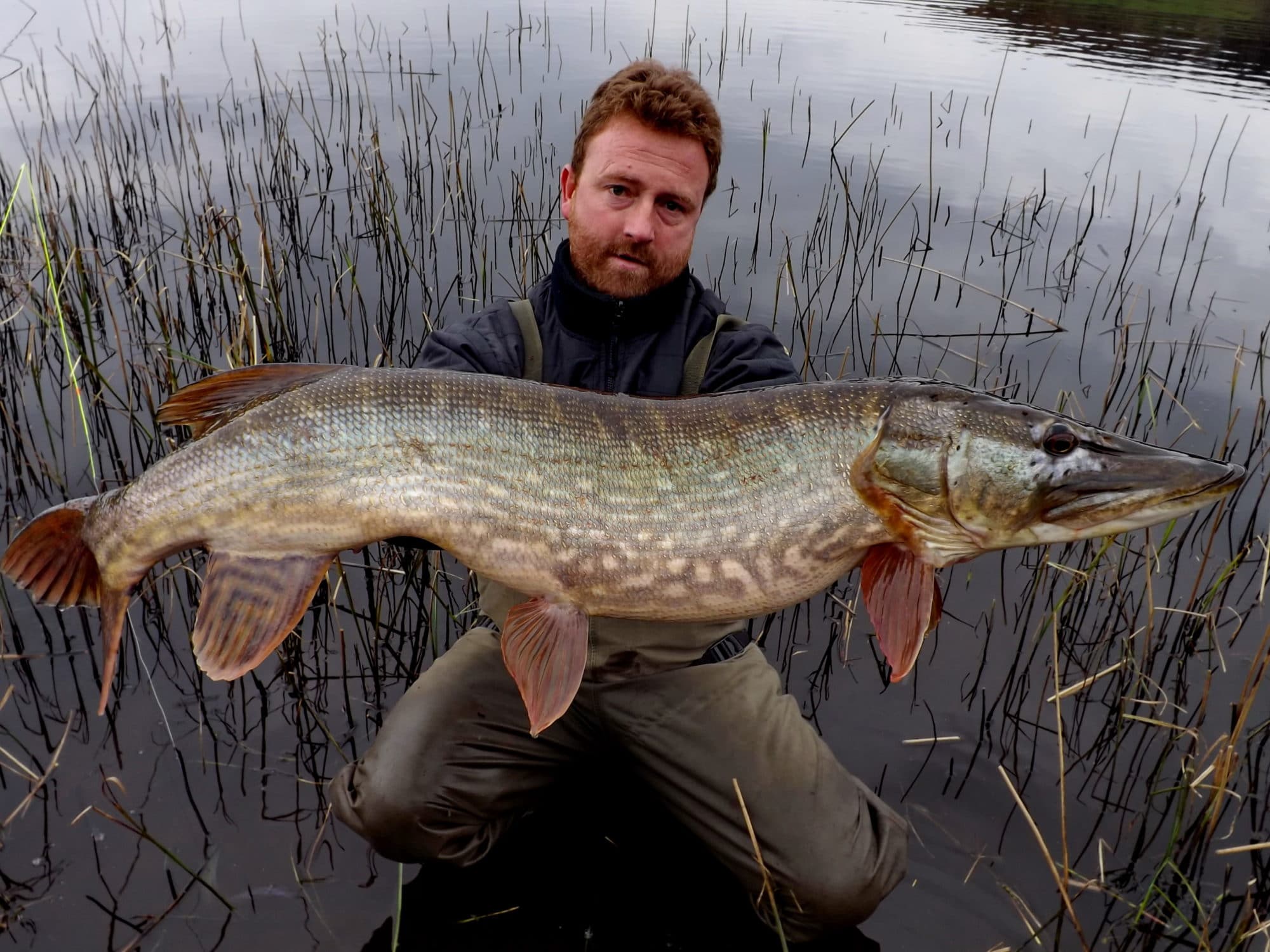Taxonomy and Characteristics

Pike fish belong to the Esocidae family, classified under the genus Esox. Their scientific name, Esox lucius, signifies their distinct physical traits. Pike fish possess elongated, torpedo-shaped bodies, allowing for swift and agile movements in their aquatic environments.
Their most striking feature is their formidable set of teeth, designed for piercing and gripping prey. The upper jaw extends beyond the lower jaw, forming an overbite that enhances their predatory capabilities. Pike fish also exhibit distinctive markings, including a dark, reticulated pattern along their bodies and a lighter, spotted pattern on their fins.
Evolutionary Adaptations, Pike fish
Pike fish have evolved remarkable adaptations that enable them to thrive in their freshwater habitats. Their streamlined bodies reduce drag, allowing for rapid acceleration and efficient swimming. Their sharp teeth and overbite provide a powerful grip on prey, while their keen eyesight and lateral line system allow them to detect movement and vibrations in the water.
Additionally, pike fish possess a swim bladder that helps them maintain buoyancy and adjust their depth in the water column. Their ability to ambush prey from a stationary position, combined with their powerful jaws and sharp teeth, makes them formidable predators in their aquatic ecosystems.
Habitat and Distribution: Pike Fish

Pike fish thrive in various aquatic environments, including lakes, rivers, and wetlands. Their habitat preference aligns with areas offering ample vegetation, such as submerged plants, fallen trees, and flooded marshes. These structural elements provide cover for hunting and protection from predators. Pike fish also inhabit areas with clear water and abundant prey, including smaller fish, amphibians, and waterfowl.
Geographical Distribution
Pike fish are native to the northern hemisphere, with a vast distribution across North America, Europe, and Asia. They have been introduced to other regions, including Australia, New Zealand, and parts of South America. Their introduction to non-native environments has raised concerns about ecological imbalances and potential threats to native fish populations.
Environmental Factors
The distribution and abundance of pike fish populations are influenced by several environmental factors. Water temperature, dissolved oxygen levels, and habitat complexity play crucial roles. Pike fish prefer cooler waters, with optimal temperatures ranging from 50°F to 65°F (10°C to 18°C). They are also sensitive to low oxygen levels, requiring well-aerated waters. Habitat complexity, such as the presence of vegetation, provides essential cover and feeding grounds, supporting the survival and reproduction of pike fish.
The pike fish, a formidable predator of the deep, is a testament to the wonders of nature’s design. Its lightning-fast strikes and razor-sharp teeth have earned it a reputation as a fearsome hunter. However, the realm of aquatic sports offers a unique twist on the pike fish’s image.
In the captivating game of perch basketball , the agility and speed of these underwater creatures take on a new dimension. As they chase the ball with fervor, the pike fish seem to embody the spirit of competition and teamwork, reminding us that even in the depths of the ocean, the pursuit of victory can ignite the passions of the most extraordinary creatures.
The pike fish, a predator in the depths, is a sight to behold. Its sharp teeth and lightning-fast reflexes make it a formidable hunter. But in the realm of basketball, the term “perch” takes on a different meaning. Perch basketball term refers to a player’s ability to stay near the basket, waiting for an opportunity to score.
Just as the pike fish lies in wait for its prey, the perch player patiently anticipates the perfect moment to strike.
Pike fish, with their torpedo-shaped bodies and sharp teeth, are apex predators in many aquatic ecosystems. Their name holds a deeper significance, for it also embodies the pike meaning of ‘sharp’ or ‘pointed.’ This reflects not only their physical characteristics but also their ability to swiftly and decisively seize their prey, leaving an indelible mark on the food chain they inhabit.
The pike fish, with its sharp teeth and predatory nature, is a formidable creature in the water. But did you know that the term “pike” also has a meaning in the world of basketball? Pike meaning basketball refers to a specific move where a player fakes a shot to draw a defender before driving to the basket.
Just as the pike fish uses its sharp instincts to hunt its prey, a basketball player uses the “pike” move to outwit their opponents and score.
Pike fish, with their sharp teeth and lightning-fast reflexes, are formidable predators in the watery depths. But even these fierce hunters must yield to the delicate flavor of sole fish , a culinary delight prized for its soft, flaky texture.
Yet, in the end, it is the pike fish that rules the watery realm, its predatory instincts honed by centuries of survival.